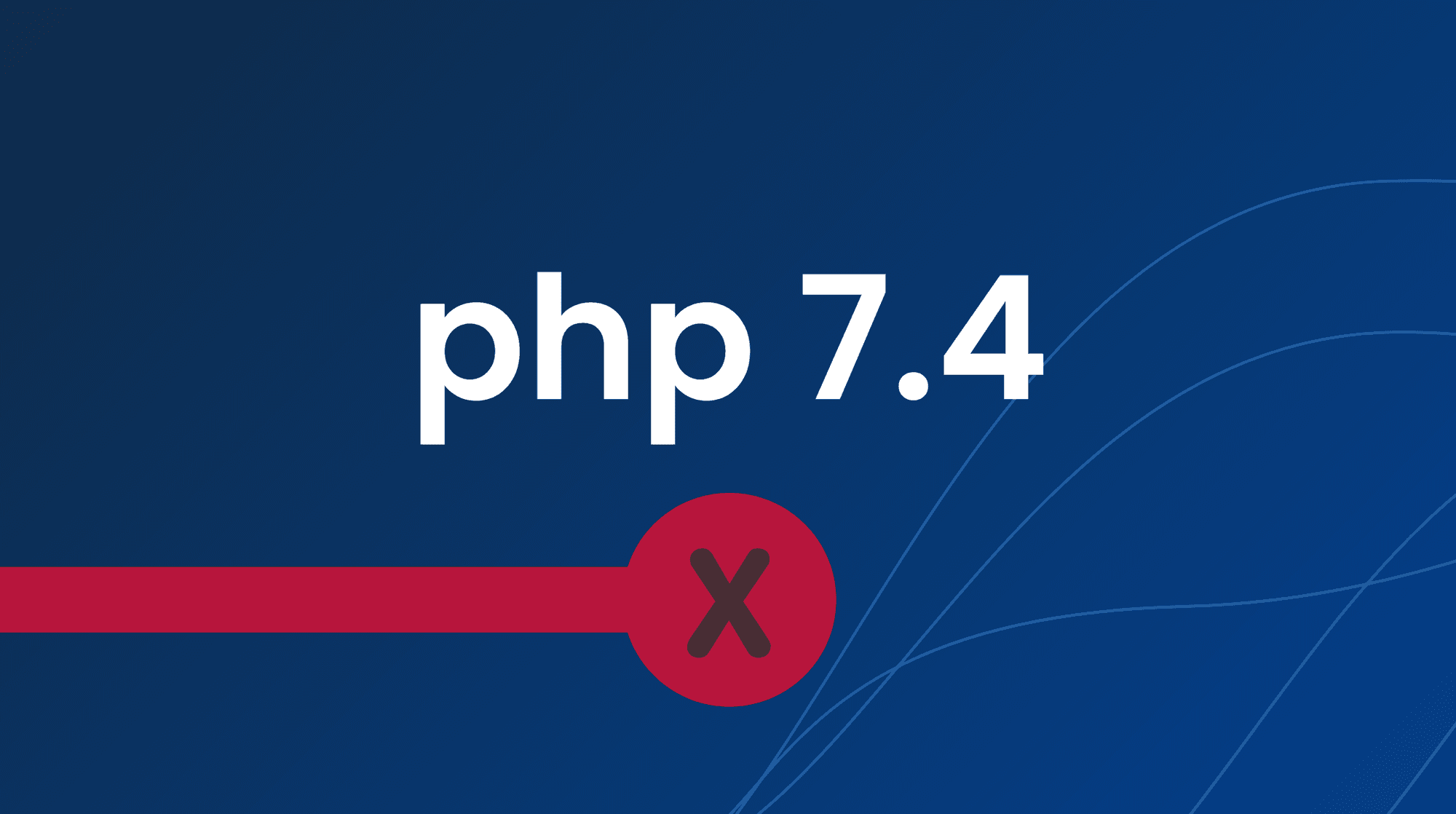在当今的数字环境中,拥有一个强大而灵活的网站对于企业、博主以及任何想要建立在线形象的人来说都是必不可少的。网站开发最具创新性和前沿的方法之一是使用无头 WordPress。
🌟✨🚀
Headless WordPress 为您的网站开辟了一个全新的可能性世界,让您摆脱传统 WordPress 设置的限制。通过将 WordPress 后端与前端分离,您可以更好地控制网站的设计、性能和功能。
但是无头 WordPress 到底是什么?为什么你应该考虑在自己的网站上实现它?在本文中,我们将深入探讨无头 WordPress 的概念,探索其优势,引导您完成实现过程,并展示无头 WordPress 的实际应用示例。
所以,系好安全带,因为我们即将使用无头 WordPress 释放您网站的全部潜力! 🗝️🔓
什么是 Headless WordPress
Headless WordPress 是一种构建网站的创新方法,可提供灵活性、可扩展性和增强的用户体验。在传统的 WordPress 设置中,“head”是指访问者与之交互的前端或用户界面。然而,在 Headless 配置中,前端和后端是分离的,这意味着表示层和内容管理系统是独立的实体。
Headless WordPress 的定义
在无头 WordPress 设置中,后端(包括 WordPress 内容管理系统 (CMS))保持不变。这意味着您仍然可以使用 WordPress 的所有熟悉功能来创建和管理内容。关键区别在于前端的处理方式。
无头 WordPress 配置不依赖内置 WordPress 主题来呈现和显示网站内容,而是使用 API(应用程序编程接口)来传递内容。这样就可以在任何平台或设备上访问和显示内容,例如移动应用程序、单页应用程序 (SPA),甚至是物联网设备。
无头 WordPress 设置的主要特征
无头 WordPress 设置提供了几个关键特性,使其成为开发人员和组织的理想选择:
- 灵活性: 使用无头配置,您可以自由选择最适合项目需求的技术堆栈和编程语言。您可以使用 React、Angular 或 Vue.js 等流行的前端框架,它们提供广泛的功能和自定义选项。
- 可扩展性: 无头 WordPress 设置可实现无缝扩展。由于前端和后端是分离的,您可以轻松地独立扩展每个组件。这意味着您可以处理增加的流量而不会影响内容管理系统的性能。
- 增强用户体验: 通过将前端与后端分离,无头 WordPress 可提供更具动态性和互动性的用户体验。您可以利用现代技术的强大功能来创建快速加载、响应迅速的网站或应用程序,以吸引和取悦您的用户。
- 内容联合: 无头 WordPress 设置的主要优势之一是能够跨多个平台和设备联合发布内容。通过 API 公开内容,您可以轻松地将其共享并分发到各种渠道,例如移动应用程序、社交媒体甚至数字标牌。
总而言之,无头 WordPress 为构建网站和应用程序提供了灵活且可扩展的解决方案。通过分离前端和后端,开发人员可以自由地创建身临其境的用户体验并将内容交付到多个平台。无论您是在构建博客、电子商务网站还是复杂的 Web 应用程序,无头 WordPress 设置都可以为现代且面向未来的解决方案奠定基础。
使用 Headless WordPress 的好处
介绍
在当今快节奏的数字世界中,拥有一个高性能、可定制且安全的网站对于企业和个人都至关重要。随着无头内容管理系统 (CMS) 的兴起,WordPress 也加入了无头革命,为用户提供了一系列独特的好处。在本文中,我们将探讨使用无头 WordPress 的一些优势以及它如何彻底改变您的网站。
提高速度和性能🚀
使用 Headless WordPress 的主要好处之一是网站速度和性能显著提升。它是如何实现这一点的?通过将后端(您在 WordPress 中管理内容的地方)与前端(您的网站向访问者显示的地方)分开,无头架构可实现更精简、更优化的网站。
使用传统 CMS,每次访问者请求网页时,服务器都会动态生成 HTML、CSS 和 JavaScript。这可能会导致加载时间变慢,尤其是在使用资源密集型插件或主题的情况下。
另一方面,使用 Headless WordPress,后端负责通过 API(应用程序编程接口)提供内容。使用 React 或 Angular 等现代 JavaScript 框架构建的前端则通过 API 调用检索内容并实时呈现。后端和前端的这种分离可以加快渲染速度并减少服务器负载,从而打造出速度极快的网站。
更多自定义选项🎨
Headless WordPress 提供无与伦比的自定义选项,让用户可以创建独特的网站体验。通过将前端与 CMS 分离,开发人员可以使用他们喜欢的框架和工具构建完全自定义且具有交互性的网站。
您可以通过以下几种方式自定义 Headless WordPress 网站:
- 使用 React 或 Vue.js 等 JavaScript 框架实现高效、模块化的前端开发。
- 利用强大的查询语言 GraphQL 的灵活性从 CMS 获取特定数据并优化性能。
- 实现服务器端渲染(SSR)以改善 SEO 并更快地加载内容,从而改善用户体验。
- 轻松集成第三方服务和 API 以增强您网站的功能。
使用 Headless WordPress,设计一个真正反映您的品牌、吸引您的受众并满足您的独特要求的网站时,可能性是无限的。
增强的安全性🔒
安全性是任何网站所有者的首要关注点,而 Headless WordPress 在这方面表现出色。通过分离前端和后端,您可以有效地限制潜在的攻击媒介并最大限度地降低安全漏洞的风险。以下是 Headless WordPress 是保护您网站的可靠选择的原因:
- 采用无头架构,无需 PHP 模板或服务器端 HTML 渲染。这使得恶意行为者更难利用您的主题或插件中可能存在的漏洞。
- 通过 API 提供内容,您可以完全控制谁可以访问您的数据并与之交互。您可以实施身份验证和授权机制,以确保只有授权用户才能访问您的内容。
- 由于前端与后端分离,因此可以应用安全更新而不会影响网站的外观或功能。这样可以更快地修补漏洞并降低成功攻击的机会。
更高的可扩展性
对于流量大或预计未来会增长的网站来说,可扩展性至关重要。Headless WordPress 提供了出色的可扩展性选项,确保您的网站能够处理不断增长的需求而不会影响性能。
以下是 Headless WordPress 如何实现更高可扩展性的方法:
- 使用单独的前端,您可以独立扩展每个组件。例如,如果您的网站流量突然激增,您可以扩展前端基础架构而不影响后端。这可确保您的网站保持响应速度并可供用户访问。
- 由于后端仅负责通过 API 传递内容,因此它可以轻松处理增加的流量而不会影响性能。这样您就可以专注于优化前端以获得卓越的用户体验。
- Headless WordPress 可以处理大量交易和请求,使其成为企业级应用程序或需要复杂功能的网站的合适选择。
总之,Headless WordPress 提供了无数好处,包括提高速度和性能、更多自定义选项、增强安全性和更高的可扩展性。通过采用这种现代架构,您可以将您的网站提升到一个新的水平,并提供卓越的用户体验。那还等什么?利用 Headless WordPress 的强大功能,释放您网站的真正潜力。
实现 Headless WordPress
Headless WordPress 是一种功能强大的 Web 开发方法,可提供灵活性、可扩展性和增强的性能。通过将后端 (WordPress) 与前端 (表示层) 分离,开发人员可以创建动态和自定义的网站和应用程序。
实施要求
在深入实施过程之前,必须了解成功设置 Headless WordPress 的关键要求。这些要求包括:
- WordPress 安装: 需要安装有效的 WordPress 作为无头设置的后端。确保您的 WordPress 版本是最新版本,以利用最新功能和安全增强功能。
- API 支持: 由于前端和后端是分开的,您的 WordPress 网站需要提供 RESTful API 来将内容传递到前端。幸运的是,WordPress 提供了内置的 REST API,允许您检索帖子、页面、媒体等。
- 前端框架: 要为无头 WordPress 网站创建表示层,您需要选择一个前端框架或 CMS(内容管理系统)。一些流行的选项包括 React、Angular、Vue.js、Gatsby 和 Next.js。
- 开发环境: 设置一个开发环境,其中包括用于运行 WordPress 安装的本地服务器和用于构建前端应用程序的代码编辑器。您可以使用 XAMPP、MAMP 或虚拟机等工具进行本地开发。
了解流程
满足必要要求后,即可开始实施流程。以下是其通常的工作原理概述:
- 创建前端: 首先设置您选择的前端框架或 CMS 环境。这涉及使用可用的前端工具创建网站或应用程序的结构、设计和功能。
- 与 WordPress API 集成: 使用 RESTful API 将您的前端应用程序连接到 WordPress 后端。此集成允许您从 WordPress 获取内容并将其无缝显示在前端应用程序中。
- 检索内容: 使用 API 请求从您的 WordPress 网站检索帖子、页面、类别和标签等数据。然后,您可以利用这些内容在前端应用程序中动态生成页面和组件。
- 实施路由: 在前端应用程序中配置路由以处理不同的 URL 或路由。这使用户能够浏览您的网站并无缝访问不同的页面或部分。
- 定制和增强: 利用 Headless WordPress 提供的灵活性来自定义和增强您网站的功能。您可以实现附加功能、集成第三方服务或根据您的特定要求优化性能。
潜在挑战和解决方案
虽然实施 Headless WordPress 有很多好处,但也带来了一些挑战。一些常见的挑战包括:
- 缺乏向后兼容性: 由于 Headless WordPress 是一种相对较新的方法,因此某些插件或主题可能不适用于解耦设置。在这种情况下,您可能需要寻找替代解决方案或开发自定义功能。
- 学习曲线: 如果您是前端开发或不同框架的新手,那么在适应所选的前端技术时可能会遇到学习曲线。但是,丰富的在线资源和开发者社区可以帮助您克服这一挑战。
- 性能优化: Headless WordPress 可以显著提高性能,但也需要仔细优化以确保最佳速度和响应能力。缓存、延迟加载和代码最小化等技术可以提高 Headless 设置的性能。
通过了解这些潜在挑战并探索可用的解决方案,您可以克服障碍并创建成功的 Headless WordPress 实施。
现在您已经清楚地了解了实施 Headless WordPress 所涉及的要求、流程和潜在挑战,您已准备好踏上构建灵活且可扩展的 Web 应用程序的激动人心的旅程。
Headless WordPress 实际应用
Headless WordPress 的实际应用
Headless WordPress 不仅仅是一个流行词,它还是一种在 Web 开发领域越来越受欢迎的强大解决方案。通过将前端表示层与后端内容管理系统分离,Headless WordPress 为开发人员提供了创建动态、交互式网站和应用程序的灵活性。
但是无头 WordPress 在现实世界中究竟是如何投入使用的呢?让我们探索一些令人兴奋的应用:
1. 具有动态内容的静态网站
使用 Headless WordPress,您可以构建由内容管理系统支持的静态网站。这样,您就可以利用静态网站的速度和安全优势,同时仍然能够轻松更新和管理内容。通过将网站的前端连接到 WordPress REST API,您可以获取最新内容并动态显示,让您的静态网站看起来像一个动态网站。
2. 移动应用程序和渐进式 Web 应用程序
Headless WordPress 是构建移动应用和渐进式 Web 应用 (PWA) 的革命性产品。通过使用 React Native 或 Flutter 等技术,开发人员可以创建从 WordPress API 获取内容的移动应用。这样可以实现应用和 WordPress 后端之间的无缝内容更新和实时数据同步。
3. 电子商务平台
Headless WordPress 是构建电子商务平台的完美解决方案。通过将 WordPress 与 WooCommerce 或 Shopify 等流行电子商务平台集成,您可以同时获得两全其美的效果。您可以利用 WordPress 强大的内容管理功能,同时利用这些平台提供的强大电子商务功能。这使您能够创建一个灵活、可定制且可扩展的电子商务网站,以满足您的特定需求。
4.数字标牌和显示系统
Headless WordPress 还可用于数字标牌和显示系统。通过利用 WordPress 的内容管理功能,您可以轻松创建和管理在数字标牌或信息显示器上显示的内容。通过将标牌系统连接到 WordPress API,您可以动态显示促销、新闻更新或活动安排等内容,所有这些都可以从 WordPress 后端进行控制和更新。
总之,无头 WordPress 拥有广泛的实际应用,它们正在彻底改变网站和应用程序的构建和管理方式。从具有动态内容的静态网站到移动应用程序、电子商务平台和数字标牌系统,可能性无穷无尽。通过分离前端和后端,无头 WordPress 使开发人员能够创建高度灵活、可扩展和个性化的数字体验。因此,无论您是开发人员、内容创建者还是企业主,请考虑在下一个项目中采用无头 WordPress 并释放其全部潜力。🚀
有关 Headless WordPress 的更多信息的资源
Headless WordPress 是一种激动人心且创新的 Web 开发方法,它将 WordPress 网站的后端与前端分开。这种分离允许更大的灵活性、可扩展性和性能。如果您有兴趣深入了解 Headless WordPress 的世界,有多种资源可以帮助您扩展知识和技能。无论您喜欢在线课程、教程,还是通过网站和博客与 WordPress 社区互动,每个人都能找到适合自己的资源。探索以下资源,将您的 Headless WordPress 之旅提升到新的水平。
在线课程和教程
在学习 Headless WordPress 等复杂主题时,结构化的在线课程会非常有帮助,可以为您提供清晰的路线图和指导。以下是一些提供专门针对 Headless WordPress 的课程和教程的在线平台:
- LinkedIn 学习 – LinkedIn Learning 提供各种 Headless WordPress 课程,涵盖从基础知识到高级概念的所有内容。他们的视频内容由行业专家指导,涵盖 Headless CMS 基础知识和使用 React 和 Next.js 等流行框架实现 Headless WordPress 等主题。
- Udemy – Udemy 是另一个流行的在线学习平台,您可以在其中找到有关 Headless WordPress 的一系列课程。从适合初学者的入门课程到更专业的主题(例如构建 Headless WordPress 主题),您将找到多种适合您学习需求的选项。
网站和博客
通过网站和博客与 WordPress 社区互动是了解 Headless WordPress 的最新趋势、最佳实践和实际应用的绝佳方式。这些资源提供了宝贵的见解、教程和案例研究,同时培养了社区意识。以下是一些值得探索的网站和博客:
- WP 酒馆 – WP Tavern 是一个流行的 WordPress 新闻和社区网站,涵盖各种主题,包括 Headless WordPress。它以文章、访谈和与专家的讨论为特色,让您了解 Headless WordPress 领域的最新发展和见解。
- 美味大脑博客 – Delicious Brains 博客是 WordPress 开发方面的信息宝库,他们还经常深入研究 Headless WordPress。通过深入的教程和发人深省的文章,该博客让开发人员了解最新技术和行业趋势。
请记住,Headless WordPress 的世界在不断发展,因此保持好奇心、探索不同的资源和参与社区至关重要。无论您喜欢互动式在线课程还是富有洞察力的博客文章,这些资源中的每一个都将有助于您理解和熟练掌握 Headless WordPress。因此,选择您喜欢的学习方式,立即开始成为 Headless WordPress 专家的旅程吧!🚀
结论
总之,使用 Headless WordPress 释放您网站的潜力可以彻底改变您的数字体验。通过分离网站的前端和后端,您可以自由地创建高度可定制且速度极快的网站。此外,随着安全性和可扩展性的提高,您可以将您的在线形象提升到新的高度。
请记住,实施 Headless WordPress 可能会面临挑战,但只要拥有正确的知识和支持,您就可以克服这些挑战并获得这项强大技术带来的回报。
要开始您的 Headless WordPress 之旅,请考虑利用 Managed-WP.™ 的专业知识和支持。作为高级托管 WordPress 云托管平台,Managed-WP 简化了基础架构,提供 24/7/365 专家问题解决方案,并使您能够最大限度地发挥 Headless WordPress 的潜力。使用 Managed-WP.™ 发现各种可能性并释放您网站的真正潜力。
了解有关 Managed-WP.™ 的更多信息 今天就开始您的 Headless WordPress 冒险吧!
🚀💻✨
常见问题
- 什么是 Headless WordPress?
Headless WordPress 是一种将 WordPress 网站的前端和后端分离的方法。前端使用 React 或 Angular 等现代技术构建,而 WordPress 则充当 Headless CMS,通过其 RESTful API 提供内容。
- 使用 Headless WordPress 有哪些优势?
使用 Headless WordPress 为创建高度可定制和交互式的前端体验提供了可能性。它允许开发人员利用现代 JavaScript 框架的强大功能,缩短页面加载时间,并方便与第三方服务轻松集成。
- 我需要高级编码知识才能使用 Headless WordPress 吗?
虽然一些编码知识是有益的,但您不一定需要高级编码技能才能使用 Headless WordPress。但是,建议对 JavaScript 和所选的前端框架有基本的了解,以便有效地实现和自定义网站的前端。
- 我还可以在 Headless WordPress 中使用 WordPress 插件吗?
是的,您仍然可以将 WordPress 插件与 Headless WordPress 结合使用。仍然可以使用提供 SEO、安全和用户管理等后端功能的插件。但是,主要修改前端的插件可能不兼容,需要自定义。
- Headless WordPress 适合所有类型的网站吗?
Headless WordPress 适用于各种网站,包括电子商务、博客、作品集等。它为开发人员提供灵活性和可扩展性,以创建独特的用户体验并充分利用现代网络技术的潜力。


















